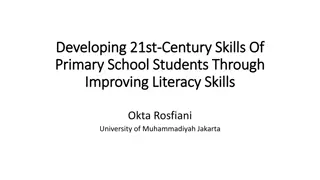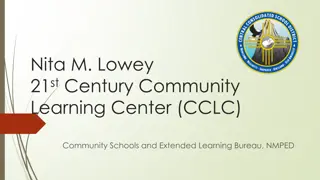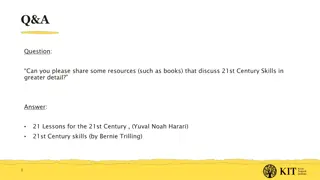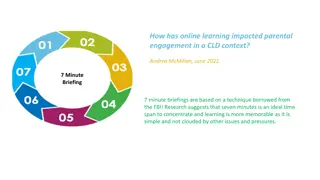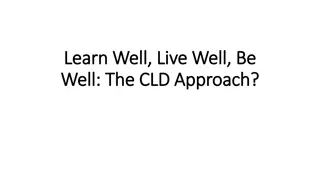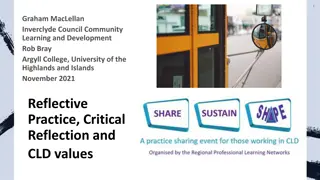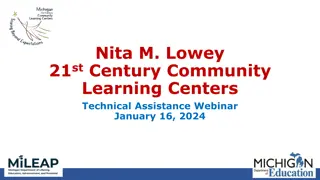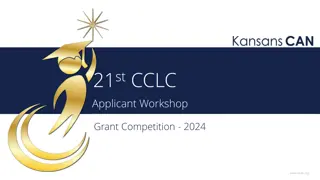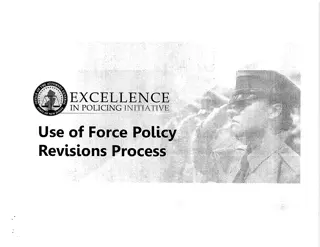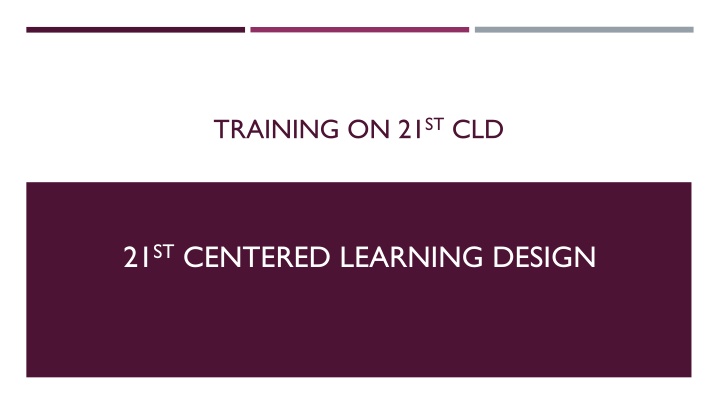
Empowering Educators with 21st Century Learning Design Guide
Explore a comprehensive guide to 21st century learning design for educators worldwide. Gain insights into the six dimensions of student learning, focusing on collaboration, communication, knowledge construction, self-regulation, problem-solving, innovation, and ICT use. Enhance your understanding of essential skills demonstrated in student work products for effective teaching and preparation of learners for the future.
Download Presentation

Please find below an Image/Link to download the presentation.
The content on the website is provided AS IS for your information and personal use only. It may not be sold, licensed, or shared on other websites without obtaining consent from the author. If you encounter any issues during the download, it is possible that the publisher has removed the file from their server.
You are allowed to download the files provided on this website for personal or commercial use, subject to the condition that they are used lawfully. All files are the property of their respective owners.
The content on the website is provided AS IS for your information and personal use only. It may not be sold, licensed, or shared on other websites without obtaining consent from the author.
E N D
Presentation Transcript
TRAINING ON 21STCLD 21STCENTERED LEARNING DESIGN
INTRODUCTION Educators globally are working to design new models of learning that better prepare learners. The purpose of this guide is to help educators identify and understand the 21st century skills that are demonstrated in students work products. Student work is what students produce when they complete a learning activity. It can be something they completed in one class period or the results of an extended project that took place both in and outside of school.
CONT This guide describes six dimensions of students 21st century learning, each of which represents an important skill for students for develop: collaboration skilled communication knowledge construction self-regulation real-world problem-solving and innovation use of ICT for learning
CONT For each dimension, this guide will help you to determine how strongly the student work demonstrates the related skill. Each dimension has the same structure: The overview introduces key concepts for that dimension. The big ideas define important attributes of the student work for each dimension. The rubric uses the big ideas to help you assign a number from 1 to 4, or I to 5, according to how strongly the student work demonstrates the given skill. The flowchart shows how to choose the best number in each case.
UNIT I. COLLABORATION This unit explores the broader meaning of collaboration, and your understanding of it. In today s workplace young people are expected to collaborate and this rubric helps you to understand what we mean by collaboration. It helps you to design lessons where students can develop collaboration skills. It will also introduce you to the dimensions of collaboration which are: students working in groups or pairs, sharing responsibility, making substantive decisions together, and being co-dependent on one another.
BIG IDEA ONE: WORKING TOGETHER. What does working together mean?
BIG IDEA ONE: WORKING TOGETHER. Students are working together when they work in pairs or groups to: discuss an issue solve a problem create a product
CONT Students work in pairs or groups might also include people from outside the classroom, such as students in other classes or schools, or community members or experts. Students can work together face to face or by using technology to share ideas or resources. What kind of technologies students can use to work together? (brainstorm)
EXAMPLE. IS THIS WORKING TOGETHER? ANSWER YES OR NO. a) Pairs of students gave each other feedback. YES. b) Students did their work alone. c) A small group discussed an issue together. d) The whole class discussed an issue. e) A student used Skype to interview a student in another town. f) Students used OneNote to share their story drafts and give each other feedback. g) Each student created his/her own story and sent it to the teacher for feedback. NO
BIG IDEA TWO: SHARING RESPONSIBILITIES What does sharing responsibility mean?
CONT Students are sharing responsibility when they are working in pairs or groups to develop a common product, design, or response. Shared responsibility is more than simply helping each other: students must collectively own the work and be mutually responsible for its outcome. If the group work involves students or adults from outside the classroom, this qualifies as shared responsibility ONLY if the students and the outside participants are mutually responsible for the outcome of the work.
EXAMPLE. IS THIS A SHARED RESPONSIBILITY? ANS YES OR NO AND WHY? Students conducted a lab experiment together. Students gave each other feedback. A student worked with a peer in another country via Skype and Microsoft Office 365 to develop a joint website. A student interviewed a peer in another country via Skype about the local weather.
CONT.. Students had joint responsibility for carrying out the lab experiment. One student owned the work, and the other was only helping. The students shared responsibility for the development of the website. This is a task that students conducted together, but they did not have mutual responsibility for any particular outcome
BIG IDEA 3: SUBSTANTIVE DECISIONS What does substantive decisions mean?
CONT Students are making substantive decisions when they are actively resolving important issues that will guide their work. Substantive decisions are decisions that shape the content, process, OR product of students work: Content: Students are using their knowledge of an issue to make a decision that affects the academic content of their work together, such as taking a stance on a topic they will then write about, or deciding on the hypothesis they will test. Process: Students are planning what they will do, when to do it, what tools they will use, or the roles and responsibilities of people on the team. Product: Students are making fundamental design decisions that affect the nature and usability of their product.
EXAMPLE DID THESE STUDENTS MAKE SUBSTANTIVE DECISIONS? Students discussed which capital city to choose for their project, based on what they knew of the political systems of each country. The students negotiated their ideas. Students worked together to identify capital cities of particular countries in Europe. Students devised a plan for creating their music video for international children s day. Students discussed who would direct, shoot, and edit the video; what technologies they would use; and the timeline for completing different stages of the work. Students filmed a video according to the list of steps the teacher provided.
CONT This is a content decision that will shape their work together. This decision does not affect the rest of their work. These decisions are fundamental to the work process for the entire project. The teacher planned the process of their work, not the students.
BID IDEA 4: INTERDEPENDENT. What does inter-dependent work mean?
CONT Students work products are interdependent when there is evidence that all students contributed and the work was integrated into a coherent product.
CONT Most interdependent work involves two levels of accountability: Individual accountability: each individual on the team is responsible for a task that he or she must complete in order for the group to do its work. The role of each student on the team is essential. Group accountability: the students must work together to produce the final product or outcome. Students must negotiate and agree on the process, design, and conclusions of their work.
INTRODUCTION Skilled communication in the 21st century learning refers to the ability of individuals to communicate clearly, using oral, written, and non-verbal languages. Society now requires that everyone has these abilities, because the demands of social relations and the global economy call for a much more diverse set of communication skills. This unit introduces the concept of skilled communication and supports teachers to design learning activities where young people can develop this important skill.
INTRODUCTION This unit will introduce you to the dimensions of skilled communication which are: Extended communication, Multi-modal, Requires supporting evidence, Communication designed for a particular audience
BIG IDEA 1: EXTENDED COMMUNICATION What does extended communication mean?
BIG IDEA 1: EXTENDED COMMUNICATION Extended communication is required when student must produce communication that represents a set of connected ideas, not a single simple thought. In written work, extended communication is the equivalent of one or more complete paragraphs rather than a sentence or phrase. In electronic or visual media, extended communication might take the form of a sequence of video, a podcast, or a page of a presentation that connects or illustrates several ideas. A single text message or tweet is NOT extended communication. If students are engaged in electronic communication, this is ONLY considered extended communication if it produces an outcome that requires students to connect the ideas they discussed (for example, producing documentation of what they learned or next steps for resolving an issue that arose). The duration of an electronic chat is not considered in evaluating extended communication.
BIG IDEA I1: MULTI-MODAL Communication is multi-modal when it includes more than one type of communication mode or tool used to communicate a coherent message. For example, students might create a presentation that integrates video and text, or embed a photograph into a blog post. The communication is considered multi-modal only if the elements work together to produce a stronger message than any one element alone. If the learning activity offers students the opportunity to choose the tool or tools they will use to communicate, we consider it to be a multi- modal communication opportunity.
BIG IDEA I1I: REQUIRES SUPPORTING EVIDENCE Communication requires supporting evidence when students must explain their ideas or support their thesis with facts or examples. For this rubric, a thesis is a claim, hypothesis, or conclusion. Students must have a thesis when they are asked to state a point of view, make a prediction, or draw a conclusion from a set of facts or a chain of logic. The communication requires evidence if students must describe their reasoning or provide supporting facts or examples. The evidence should be sufficient to support the claim that the student is making.
BIG IDEA IV: COMMUNICATION DESIGNED FOR A PARTICULAR AUDIENCE Students are required to design their communication for a particular audience when they must ensure that their communication is appropriate to the specific readers, listeners, viewers, or others with whom they are communicating. It is not sufficient for students to be communicating to a general audience on the internet. They must have in mind a specific group with specific needs in order to shape their communication appropriately.
INTRODUCTION Knowledge construction provides a rationale for giving young people an opportunity to move beyond memorizing facts and to develop their critical thinking and reasoning skills. The 21CLD: Knowledge Construction course introduces you to the dimensions of Knowledge Construction which are: Knowledge construction, Knowledge construction as the main requirement, Apply their knowledge, Interdisciplinary so that students can build deep knowledge that they can transfer and apply in practice.
BIG IDEA I: KNOWLEDGE CONSTRUCTION Knowledge construction happens when students do more than reproduce what they have learned; they go beyond knowledge reproduction to generate ideas and understandings that are new to them. The skills of knowledge construction are often considered critical thinking. Activities that require knowledge construction ask students to interpret, analyse, synthesise, or evaluate information or ideas.
Interpretation means drawing inferences beyond the literal meaning. For example, students might read a description of a historical period and infer why people who lived then behaved the way they did. Analysis means identifying the parts of a whole and their relationships to each other. For example, students might investigate local environmental factors to determine which are most likely to affect migrating birds. Synthesis means identifying the relationships between two or more ideas. For example, students might be required to compare and contrast perspectives from multiple sources. Evaluation means judging the quality, credibility, or importance of data, ideas, or events. For example, students might read different accounts of an historical event and determine which ones they find most credible.
EXAMPLES: IS THESE KNOWLEDGE CONSTRUCTION? ANSWER YES OR NO Students searched the Internet for information about local activities to help the environment and analysed the information to decide what else could be done. Students searched the internet for information about local activities to help the environment and gave a presentation to describe what they found. A student s paper compared and contrasted information from multiple sources. A student s paper describes information they found online or in books. Students who have not learned about parallel lines examined several different pairs of lines to develop a definition of parallel. Students used the definition of parallel to decide whether several sets of lines were parallel.
BIG IDEA 2: KNOWLEDGE CONSTRUCTION AS THE MAIN REQUIREMENT The main requirement is the part of the activity that students spend the most time and effort on and the part that educators focus on when grading. If the learning activity does not specify how much time students should spend on each part, you may have to use your professional judgment to estimate how long students are likely to spend on different tasks.
EXAMPLE. IS THE MAIN EFFORT KNOWLEDGE CONSTRUCTION? 1. A student made a short list of important details from a story, then wrote an essay using these details as evidence for why a character committed a crime. 2. A student made a long list of details from a story, then wrote two sentences to describe why a character committed a crime.
FEEDBACK. The work implies that most of the student's time was spent on analysis. The work implies that most of the student's time was spent listing details (a recall task).
BIG IDEA 3: APPLY THEIR KNOWLEDGE Students must apply their knowledge when they use the knowledge they have constructed to support another knowledge construction task in a new context. For example, students in a physics class might construct knowledge about heat principles from a study of the Earth s inner core, and then apply what they learned to investigate the environment of Jupiter
EXAMPLES: ANSWER YES OR NO AND WHY? DID STUDENTS APPLY THEIR KNOWLEDGE? Students analysed demographic statistics from their home town and then used their understanding of population trends to develop a plan for an upcoming housing development project. Students analysed demographic statistics from their home town and then analysed demographic statistics from a second location of their choice.
CONT Students examined photos enlarged at different sizes to develop an understanding of similarity and then applied that knowledge to abstract geometric shapes, thinking about size ratios and angles to determine which shapes are mathematically similar. Students examined photos enlarged at different sizes to develop an understanding of similarity and then described their understanding. Students designed and executed a procedure for testing the qualities of the tap water at their school. Once they had accurate data, they used that information to determine which water filtration system would be most appropriate for the school. Students designed and executed a procedure for testing the qualities of the tap water at their school. They tested the water and redesigned the procedure iteratively until they had accurate data.
FEEDBACK: Students applied their knowledge from analysing demographic statistics in order to develop a housing plan; this step required further analysis. Students did not apply their knowledge from analysing demographic statistics to any new activity; they simply repeated the same activity with a different dataset Students applied their knowledge from evaluating shapes to deepen their own understanding of mathematical similarity. Students did not apply their knowledge from evaluating shapes to any new domain; they simply articulated that knowledge
CONT.. Students applied their knowledge from designing and conducting water quality tests to select an appropriate water filtration system, which required them to look at what they have learned in a new way and deepen their knowledge. Although students applied their knowledge from previous trials to refine the procedure, they only applied knowledge within a single (repeated) context. They deepened their knowledge, but did not extend it to a new type of application.
BIG IDEA 4: INTERDISCIPLINARY LEARNING ACTIVITIES Interdisciplinarylearning activities have learning goals that involve content, important ideas, or methods from different academic subjects (such as mathematics and music, or language arts and history). Subjects that are typically taught together in your country do not count as interdisciplinary. For purposes of this unit, ICT is NOT considered a separate academic subject. ICT is often used as a tool for learning in other subjects. For example, students might build ICT skills when they do online research for a history project. This activity is NOT considered interdisciplinary.





